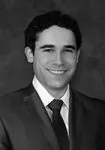This week, the United States Patent and Trademark Office (USPTO) announced 1 the Post-Prosecution Pilot Program ("P3") for applicants to respond to a final rejection in a utility patent application. Under the P3, an applicant may participate in a conference with a panel of three examiners to review the applicant's response to a final rejection. To obtain entry into the pilot, an applicant must submit:
- A Request Form2 filed within two months from the mailing date of a final rejection and prior to filing a notice of appeal; and
- A response including no more than five (5) pages of arguments.3
Optionally, the applicant may also submit a proposed non-broadening amendment to the claims that does not count toward the 5-page limit for the response. No fee is required to participate in the P3.
Once a P3 request is accepted, the Office will schedule a P3 conference with the applicant. The applicant is given up to 20 minutes to make an oral presentation to the panel of examiners, and then excused from the conference. Any materials used by the applicant during the conference are placed in the application file.
After the presentation, a written panel decision4 is sent to the applicant. One of three outcomes is possible:
- Final Rejection Upheld –applicant may file a notice of appeal or RCE.
- Application Allowed – the applicant is mailed a Notice of Allowance.
- Prosecution Reopened – the current rejection is withdrawn, and applicant is mailed a new Office Action.
The USPTO states that the P3 will incorporate effective features of two programs currently aimed at improving after final prosecution: (i) the After Final Consideration Pilot (AFCP) 2.0 program and (ii) the Pre-Appeal Brief Conference Pilot program.5 Table 1, below, compares some of the salient features of these three Pilot programs.
Table 1: After Final Pilot Programs Currently Available to Applicants
|
Post-Prosecution Pilot |
AFCP 2.0 Pilot |
Pre-Appeal Brief Conference Pilot |
|
|
Panel of three (3) Examiners? |
Yes |
No – only current Examiner |
Yes |
|
Interview with Examiner(s)? |
Yes |
Sometimes6 |
No |
|
Non-broadening Amendments Permitted? |
Yes – optional |
Yes – required for at least one independent claim |
No |
|
Notice of Appeal (NOA) Required? |
No – must be filed before NOA |
No – must be filed before NOA |
Yes – must be filed concurrently |
|
Response Page Limit? |
5 Pages |
None |
5 Pages |
It is worth noting that in order to participate in the P3, applicant cannot have previously filed a proper request to participate in the Pre-Appeal or the AFCP 2.0 Pilot programs in response to the same final rejection. Likewise, once a P3 Request is accepted, applicant may no longer request participation in the Pre-Appeal or AFCP 2.0 Pilot Programs.
Initially, the P3 will run for 6 months from July 11, 2016, or when 1600 requests have been accepted into the Pilot, whichever comes first. If the USPTO follows in the footsteps of its Pre-Appeal and AFCP 2.0 Pilot Programs, it may extend the P3 after that.
Footnotes
1 Post-Prosecution Pilot Program, 81 Fed. Reg. 44845 (July 11, 2016).
2 USPTO Form PTO/SB/444.
3 Applicant must also submit a mandatory statement that the applicant is willing and available to participate in the conference. This statement is included in the request form supplied by the USPTO.
4 USPTO Form PTO-2324.
5 http://www.uspto.gov/patent/initiatives/post-prosecution-pilot, last accessed July 14, 2016.
6 Under the AFCP 2.0 Pilot, "[i]f the examiner determines that the amendment does not necessitate additional search and/or consideration, or if the examiner determines that additional search and/or consideration is required and could be completed within the allotted time, then the examiner will consider whether the amendment places the application in condition for allowance (after completing the additional search and/or consideration, if required). If the examiner determines that the amendment does not place the application in condition for allowance, then the examiner will contact the applicant and request an interview." USPTO Form PTO/SB/434.
The content of this article is intended to provide a general guide to the subject matter. Specialist advice should be sought about your specific circumstances.
